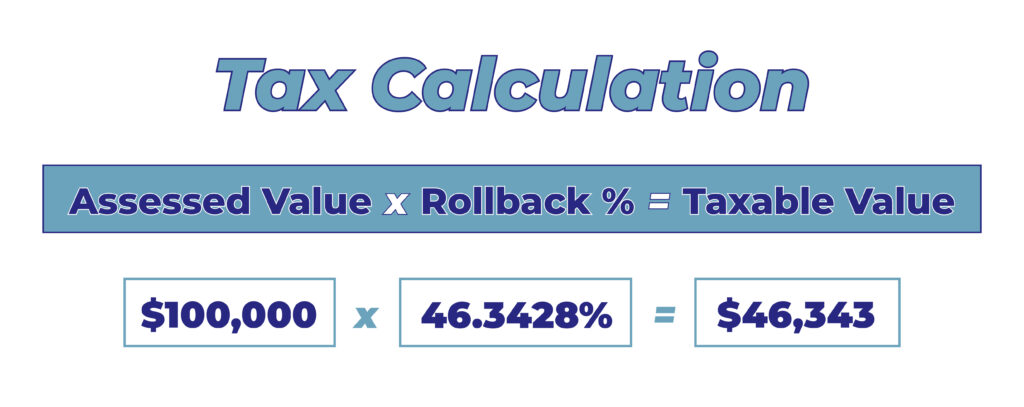The amount of property tax you pay could go down if local governments choose to keep the levy rate the same or lower it.
Many people got their new property tax assessments or valuations in the mail last fall. While the value of their home might have increased 20% or more, that does not mean your property taxes are going to increase 20% thanks to a law on Iowa’s books called the rollback.
The Iowa legislature enacted a statewide rollback in 1978, which “rolls back” the amount of your home that is subject to taxation. The rollback percentage is adjusted each year by the Iowa Department of Revenue. Last year the rollback rate was 54.6501%. This year, due to the growth in valuations across the state, the rollback rate dropped to 46.3428%. See the calculation below to understand how the rollback rate is applied to generate the taxable value local governments use when levying property taxes.

From the taxpayer’s perspective, the rollback percentage is a form of assessment limitation that helps keep property taxes from growing too fast. The growth in total taxable value for all of Iowa’s residential property is restricted to grow no more than 3% per year. For any given property, a higher rollback percentage will result in a higher taxable value. The example below shows how the rollback is used to limit the property taxes paid by taxpayers when there are large increases in the assessed value.
As you can see from the above example, the amount of tax you pay could go down based upon the rollback. So, even though many properties across Iowa saw record assessment growth, taxes should not increase that much. However, many jurisdictions will choose to increase the levy rate to make you pay more.
The rollback was first applied in 1978, permitting 6% growth in the taxable value of residential property. From 1980 through 2012, the allowable growth rate was reduced to 4%. Beginning in 2013, the growth limit is 3% statewide. Below is a full history of Iowa’s residential rollback percentage from inception. It is evident from the steep drop from 2022 to 2023 that the rollback is reacting to the inflationary pressures on home values, which is what it is intended to do to protect property taxpayers.
